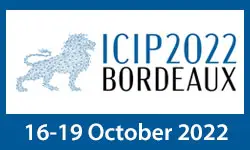Future Frame Extrapolation Using Future Cost Volume
Seunggyun Woo, Junheum Park, Chang-Su Kim
-
Members: FreeSPS
IEEE Members: $11.00
Non-members: $15.00Length: 00:08:40
18 Oct 2022
Collaborative intelligence (CI) has been proposed to efficiently utilize computational resources on edge devices over edge-cloud environments. To realize this, a deep neural network (DNN) model is divided into two parts, which are deployed to the edge device and cloud separately so that they can perform DNN inference collaboratively. Feature compression methods have been investigated to reduce the traffic volume because the data size of a feature map, which is the output of the edge device in CI, is relatively large. Although feature compression methods can achieve a good compression rate, the traffic volume is not small enough because the data size of a feature map might exceed that of the original image. Herein, we propose a novel feature compression method that utilizes an autoencoder (AE) to compress the feature map. in image compression, distortion and data size are minimized, whereas in our method, the AE is trained to minimize the prediction error and data size. in performance evaluation, we apply the proposed method to widely used convolutional neural network models: VGG16, ResNet50, and YOLOv3. Our results confirm that the proposed method drastically reduces the traffic volume while utilizing the resources of edge devices in CI.



